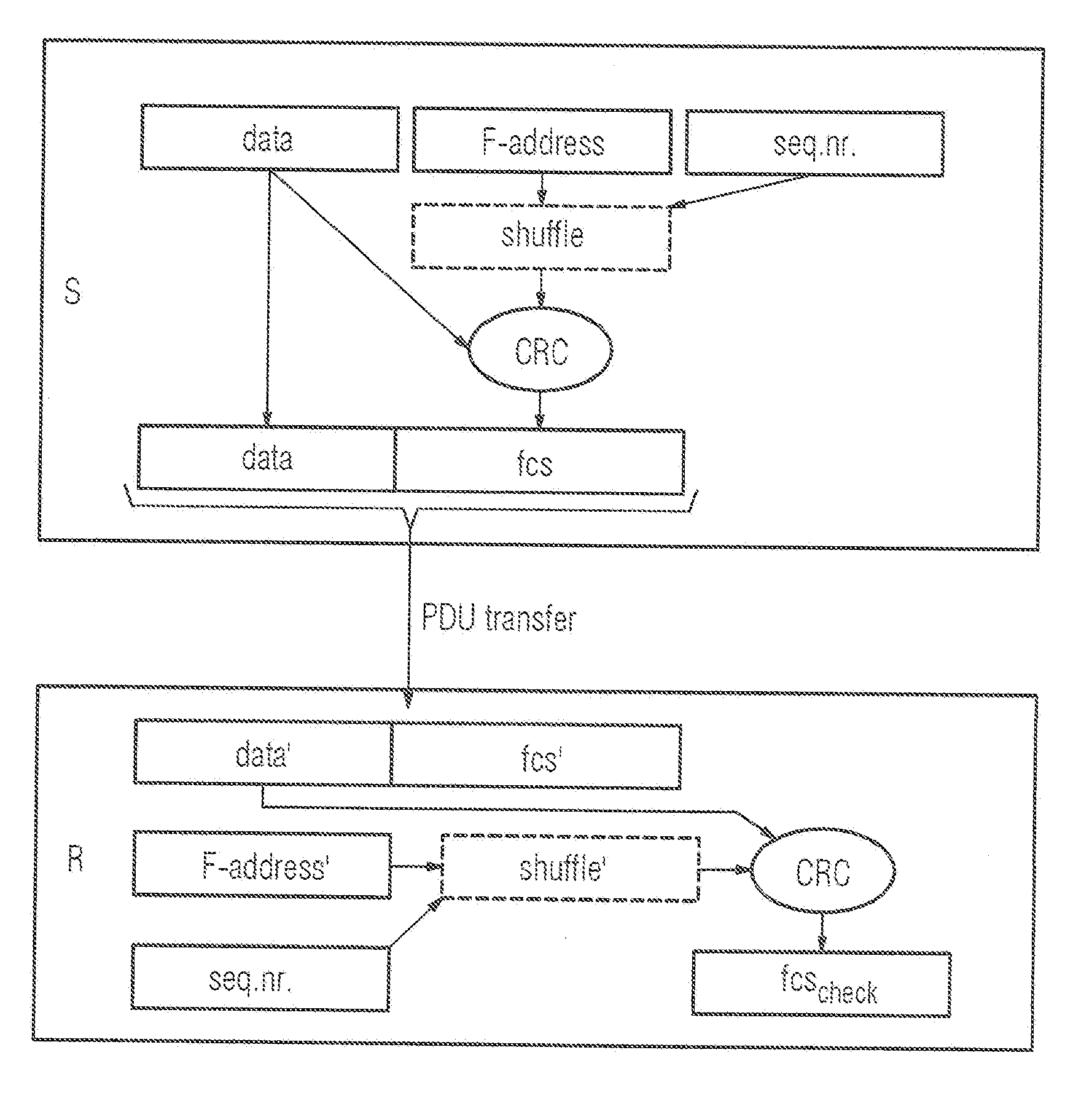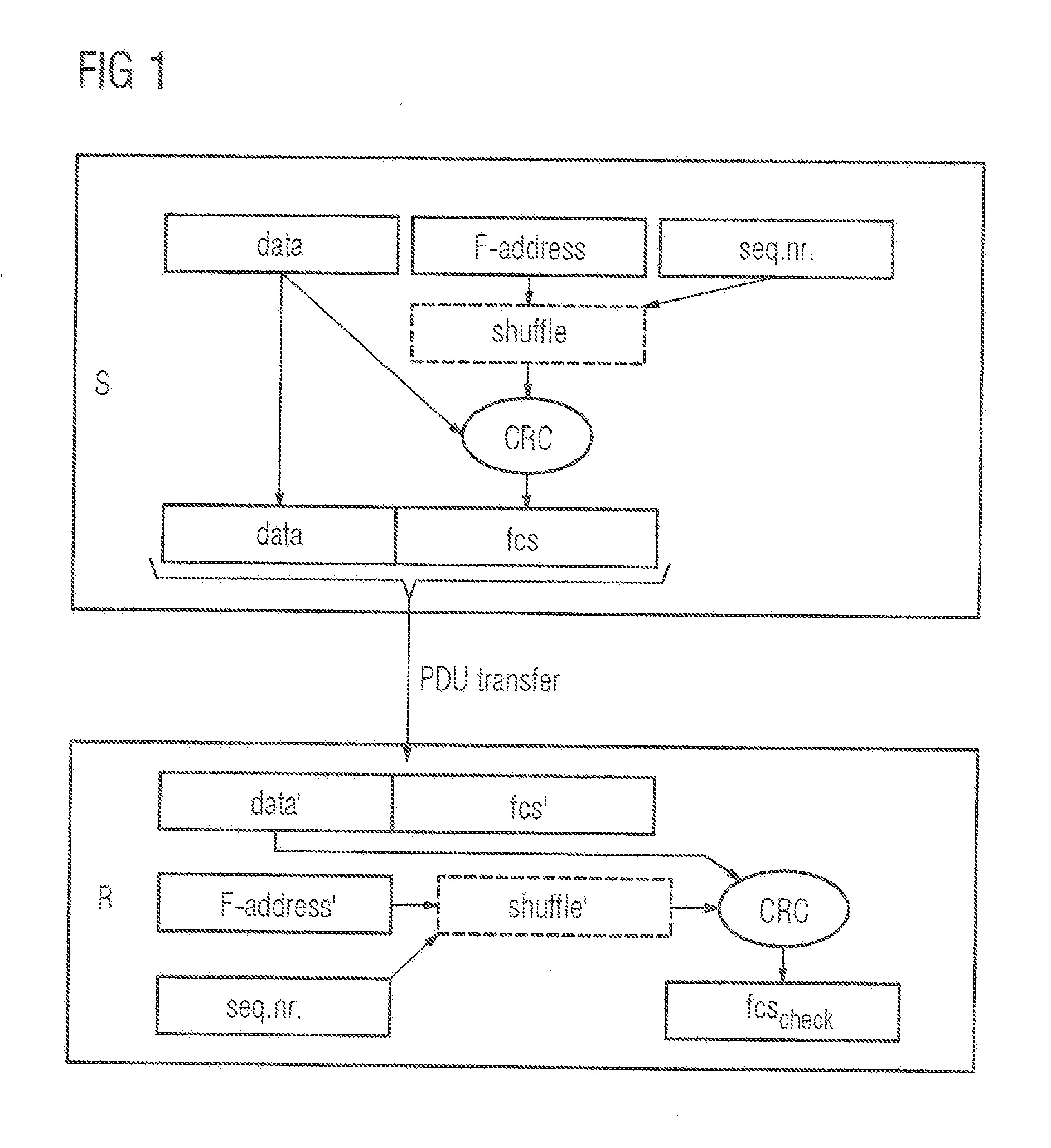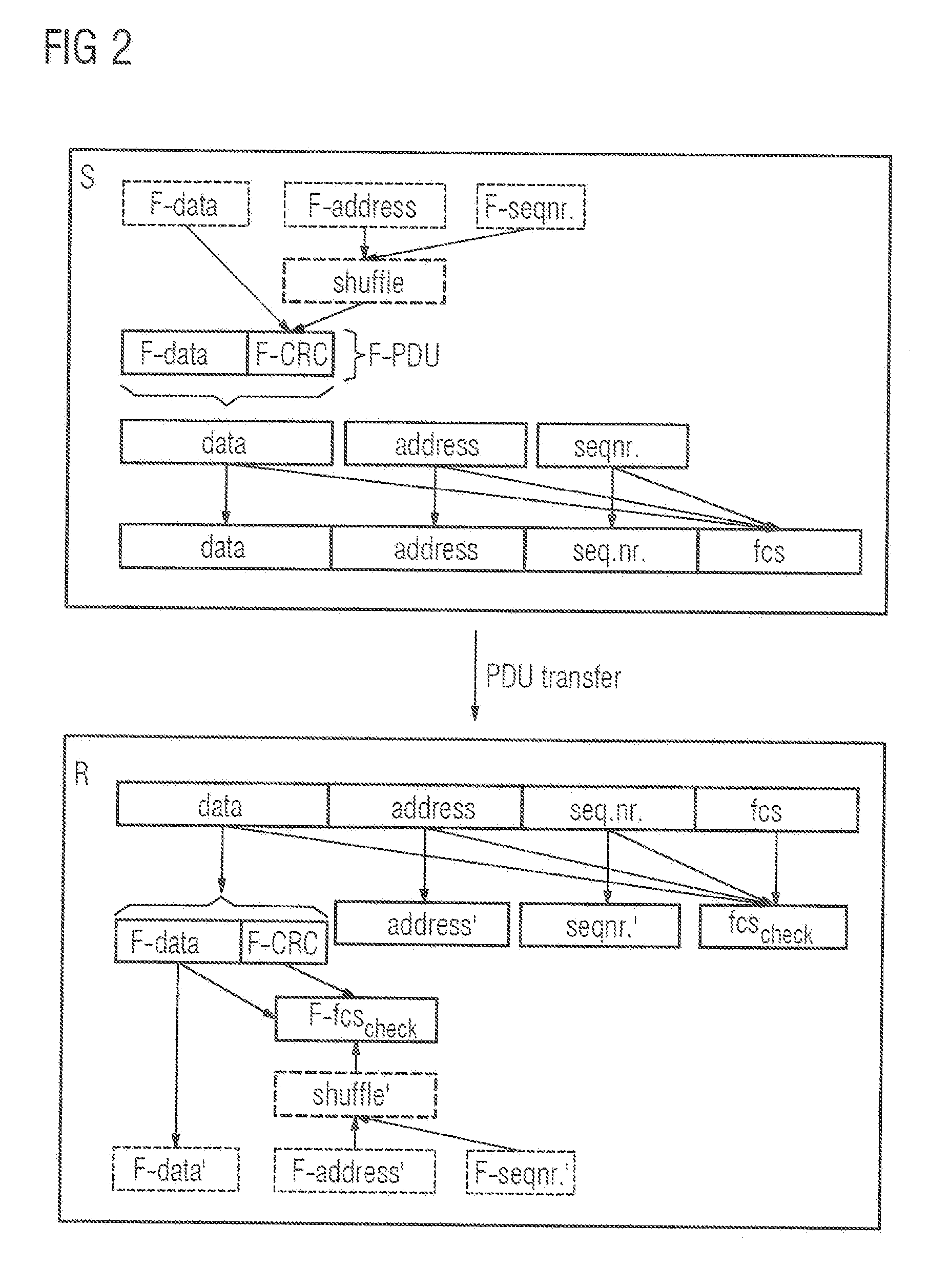Method and System for Detecting Errors in the Transfer of Data from a Transmitter to At Least One Receiver
a technology of error detection and data transfer, applied in the field of failure to communicate, can solve the problems of unfavorable cases, non-detectability of errors, and the probability of address errors being detected, and achieve the effect of reducing the statistical average residual error probability and worse residual error probability of individual data packets
- Summary
- Abstract
- Description
- Claims
- Application Information
AI Technical Summary
Benefits of technology
Problems solved by technology
Method used
Image
Examples
Embodiment Construction
[0033]FIG. 1 shows schematically the generation, transfer and evaluation of a data packet PDU (Process Data Unit). The data packet PDU consists of a data part and a check value FCS (Frame Check Sequence), wherein it is assumed that the data part and the check value FCS are transferred using a known safety-oriented transfer method from the transmitter S to the receiver R (“transfer”). The data part and the check value FCS therefore represent the useful information (“payload”) of a data packet, such as a frame constructed according to the TCP / IP protocol used in the Ethernet.
[0034]The data part, which is intended to he the actual payload of the safe transfer channel, is incorporated unchanged into the safety-oriented data packet in the transmitter S. In addition, a check value FCS is generated which is formed in the present example embodiment using the CRC method (CRC=Cyclic Redundancy Check). However, in the CRC method, the check value FCS is generated from the data part and a number...
PUM
 Login to View More
Login to View More Abstract
Description
Claims
Application Information
 Login to View More
Login to View More - R&D
- Intellectual Property
- Life Sciences
- Materials
- Tech Scout
- Unparalleled Data Quality
- Higher Quality Content
- 60% Fewer Hallucinations
Browse by: Latest US Patents, China's latest patents, Technical Efficacy Thesaurus, Application Domain, Technology Topic, Popular Technical Reports.
© 2025 PatSnap. All rights reserved.Legal|Privacy policy|Modern Slavery Act Transparency Statement|Sitemap|About US| Contact US: help@patsnap.com



